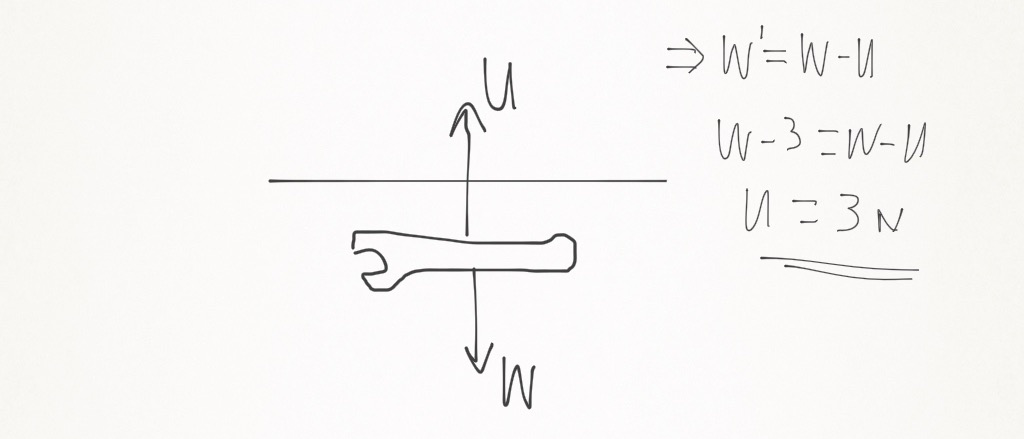#"(a)"# The answer is #2387.8 "kg"#
Method
From Archimedes' Principle: the upthrust force on an object placed in a fluid is equal to the weight of the fluid displaced
and volume of the fluid displaced is equal to the volume of the object.

where #W# is the real weight of the wrench and #W'# is the apparent weight due to the Upthrust force(#U#).
From the formula: #"density" = "mass"/"volume"#
#=># The volume of water displaced, #V_w= m_w/rho_w#
Now, our upthrust, #U="weight of water displaced"(m_wg)=3#
#=> m_wg=3#
#=>m_w=3/g#
#=>V_w=3/(grho_w)#
Similarly, volume of wrench #V=m/rho#
Equate the two volumes to get the only unknown; mass
#=>m/rho=3/(grho_w)#
#=>m=(3rho)/(grho_w)#
#=>m=(3xx7800)/(9.8xx1)=2387.8 "kg"#
#"(b)"# If the fluid is denser then, the mass would be smaller
I know this from #m=(3rho)/(grho_w)#
That is, #m # # alpha # #1/rho_w#

